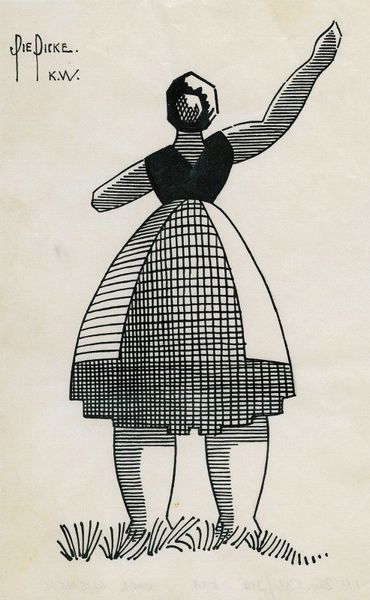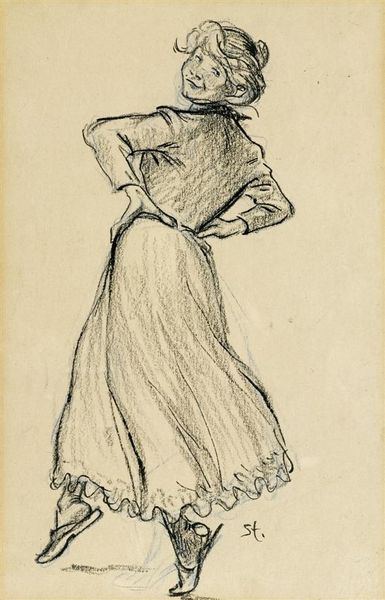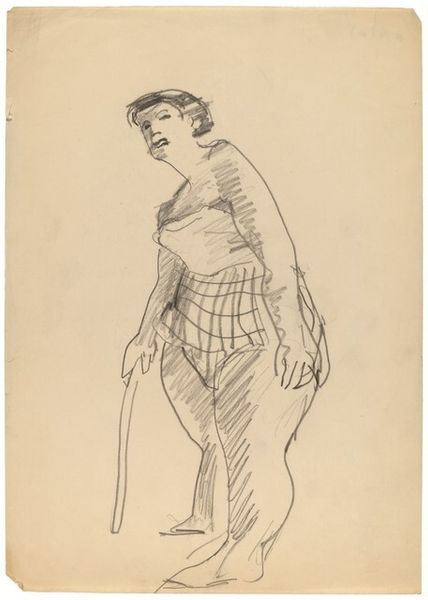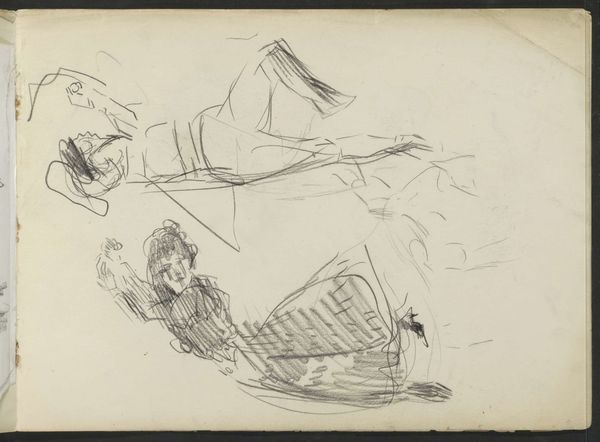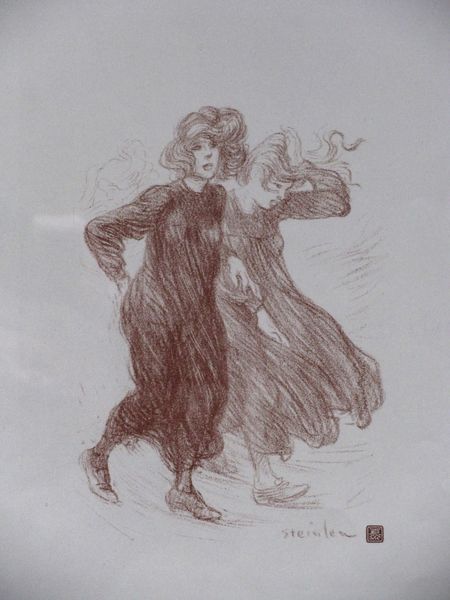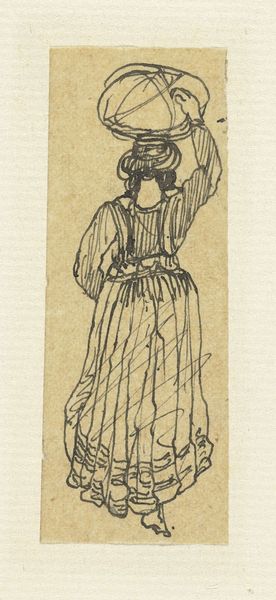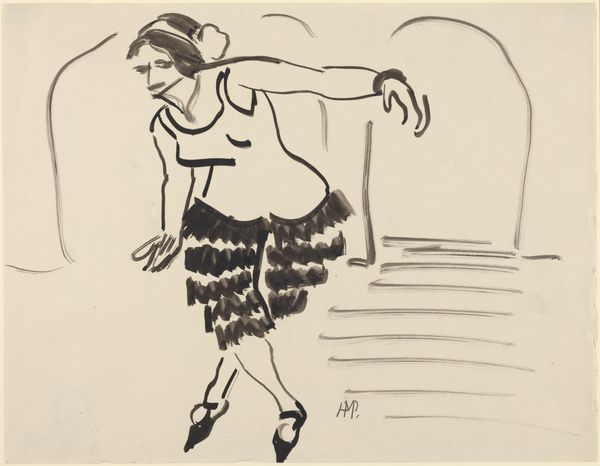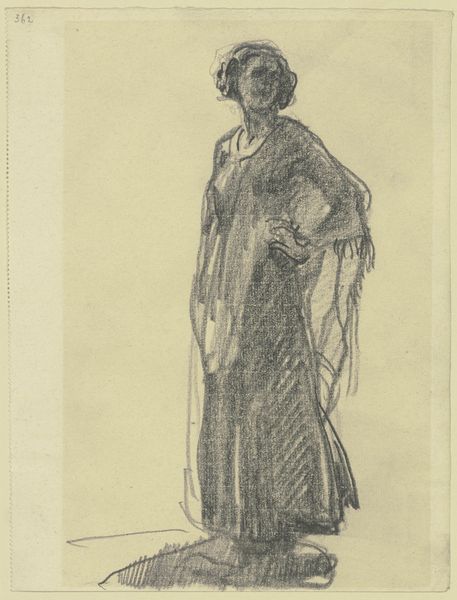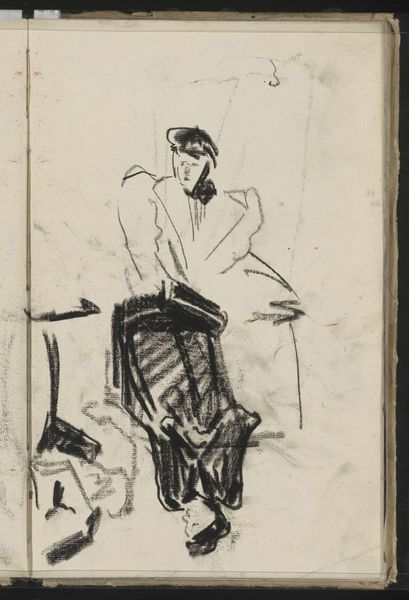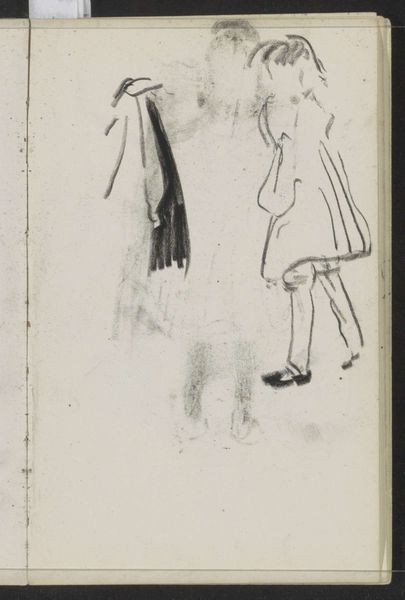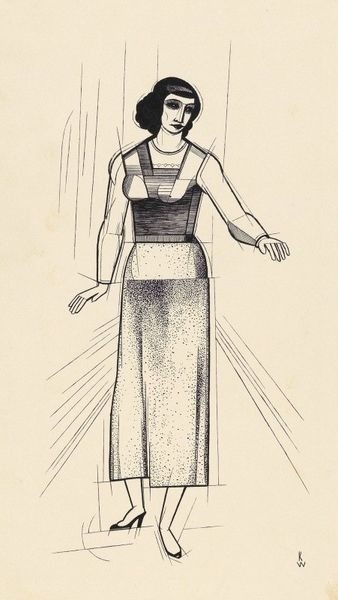
drawing, ink
#
action-painting
#
portrait
#
drawing
#
figuration
#
ink
#
line
#
modernism
Copyright: Public Domain: Artvee
Curator: Cyprián Majerník's ink drawing, "Tanečnica," created in 1934, immediately strikes me. The energetic strokes really animate the subject. Editor: My first impression is the incredible sense of movement—almost dizzying, like a snapshot taken mid-twirl. But there’s something melancholic about it too, perhaps in the figure’s shadowed face. Is she dancing to celebrate or to escape? Curator: Perhaps both. Majerník often explores themes of isolation and social commentary, but his frequent use of the dancer motif reaches far into older ideas of the cyclical dance of life, connecting suffering with the joyful freedom of self-expression. Even the geometric grid on the floor beneath her, a clear product of modernism, suggests that such cyclical views may be bound to rational thought. Editor: I see what you mean. The dancer feels trapped on a stage but yearns for liberation. It almost critiques the confined roles women often played. The skirt seems like a cage. It's fascinating how the sketchy linework can suggest so much societal pressure and internal conflict. Curator: Indeed. Line is especially important for decoding these gestures. The repetition of strokes in the lower right creates the illusion of blurring speed but it simultaneously seems to trap her inside of something. Also consider her bare feet as a powerful signifier—especially in 1934, shoes meant an incredible degree of class privilege. Editor: This reminds me of some theories around the flapper figure – the 'modern' woman of the 20s and 30s who expressed a lot of repressed identity in their manner and dress. Though modestly styled for our modern eyes, her posture and clothes feel subtly defiant in light of the traditional expectations. She’s a sign of changing times—yet constrained by that era, hence your cyclical reading feels apropos. Curator: The sketchiness suggests both something spontaneous and perhaps transient, yet I also feel her enduring, echoing the dancer archetype which reappears century after century. It makes me think about resilience, and even hope. Editor: Absolutely. While acknowledging the confines, it also gestures toward the power of self-expression, something people of marginalized identities and classes have been doing despite such impositions across decades. Thanks for the reminder.
Comments
No comments
Be the first to comment and join the conversation on the ultimate creative platform.

